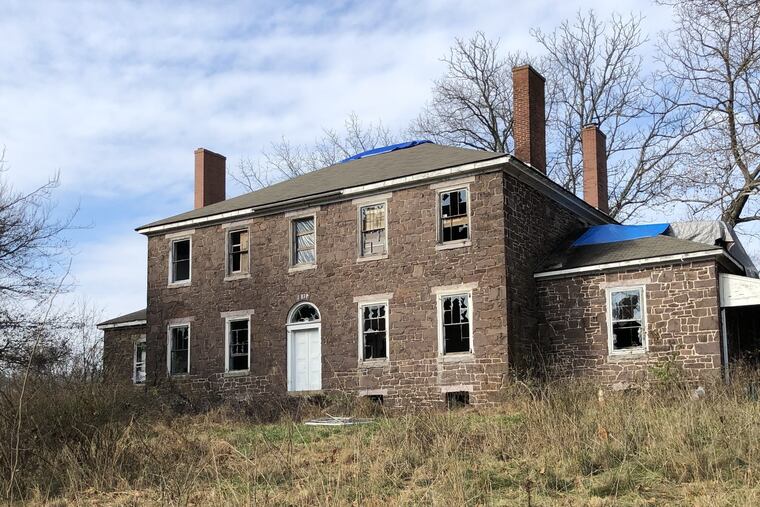Human remains found on the grounds of the historic Hood Mansion in Montco
Their historic home is up for grabs to whoever will move it, but now it appears some of the original owners never quite left. What will it mean for development plans?

The historic Montco mansion that was offered for free to anyone able to move it still doesn’t have a taker. But there’s a new twist in this preservation vs. development saga.
Not only is the 1834 Hood Mansion still on the Limerick property — now it appears, so were some of the original owners.
The Eastern Pennsylvania Preservation Society, which has been trying to save the Hood Mansion, says it commissioned recent archaeological digs at the property which turned up, what they believe, are the remains of family patriarch and 19th-century Philadelphia merchant John McClellan Hood, his wife, Elizabeth, and two of their offspring, Washington and Montgomery.
“We need to raise awareness about the fact that the developer was willing to just pretend that they weren’t there and just build this warehouse project,” said Tyler Schumacher, Eastern Pennsylvania Preservation Society president. “We’re going to use this to further our cause to save the mansion.”
King of Prussia attorney Edmund J. Campbell, who represents MCD 7 LLC, the Brooklyn-based development company that owns the property, said his client learned about the discovery of the human remains on Aug. 15 from the Eastern Pennsylvania Preservation Society and the Limerick Township Historical Society.
“We are committed to ensuring that this matter is handled with the utmost respect and sensitivity,” Campbell said in an email statement. “Our primary concern is to make certain that this situation is managed according to best practices and procedures.”
He added that the societies have been asked to stop their activities on the property until the owner can confirm the appropriate procedures being followed.
“We are in the process of reviewing the material provided to us,” Campbell said. “We contacted independent consultants to provide us with guidance as to appropriate next steps.”
Schumacher said the digs began in June and continued into early August. The specialists involved were Nathan Babb from the Boyertown Historical Society’s archaeological division, forensic archaeologist Kimberlee Moran of Rutgers University, and independent archaeologist Alex Denning.
According to Schumacher, the developer told Eastern Pennsylvania Preservation Society and town officials that he believed there were no human remains still on the property.
“I want to make it crystal clear that we would have preferred to not do the dig, but we really didn’t have much of an option, because he told us they weren’t there,” the preservation leader said. “We needed to prove it.”
DNA testing has not been done on the remains, but the preservationists believe they are of Hood family members based on documentation and other information they’ve obtained. Schumacher said they believe additional remains are still on the property.
The remains are being held at a local funeral home, he said.
Earlier this year, Schumacher said the developer told the society if they could find someone to remove the Hood Mansion from the property, they could have it free of charge.
So far, that hasn’t worked out.
“We had four people who were fairly serious, and unfortunately, all of those deals fell through,” said Schumacher, who started the society because he wanted to preserve the Hood Mansion. He is also the facilities site manager at Lynnewood Hall in Elkins Park.
The 112-acre property had been the summer home of Hood, an Irish immigrant and successful Philadelphia businessman, and his wife and their 13 children. Their eldest son, Washington Hood, a West Point graduate, had a monument erected in his honor on the property, and a mausoleum was created for family members. Their brownstone mansion has 17 rooms, oak beams, chestnut floors, and nine fireplaces.
The estate is said to have served as a stop on the Underground Railroad for slaves fleeing to freedom. According to Eastern Pennsylvania Preservation Society, 15 Hood family members were interred on its grounds.
Over the decades, however, vandalism and grave robbery forced most of the remains of the family members to be moved to Laurel Hill Cemetery in Philadelphia, according to Eastern Pennsylvania Preservation Society. In July, the monument to Washington Hood, a marble obelisk, was vandalized.
The Limerick Township Historical Society was able to secure a plot for the new remains and the monument, which is being repaired, at the Limerick Church Burial Ground. This will be used in case they cannot be returned to the Hood property, Schumacher said.